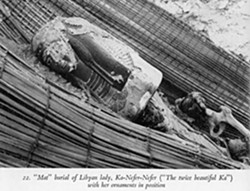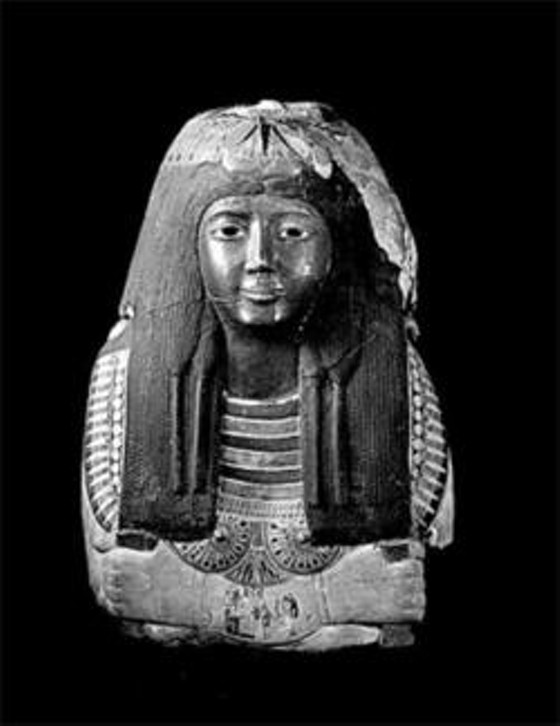
Egyptian minister of antiquities Mohamed Ibrahim has a message for the Saint Louis Art Museum: Let our mummy mask go.
The mummy in question is Ka-Nefer-Nefer, "The Twice-Beautiful Ka," an Egyptian noblewoman whose funeral mask was unearthed by archaeologist Mohammed Zakaria Goneim in 1951, more than 3,000 years after her death. SLAM acquired the the mask in 1998 from an antiquities dealer, but Egypt maintains the mask was stolen decades ago and smuggled out of the country.
The U.S. government sued SLAM in 2011, attempting to return the mask to Egypt, but the case fell apart last week after U.S. attorneys missed a simple filing deadline. Now, the Egyptian government is threatening to sue SLAM itself.
See also: Saint Louis Art Museum Wins Court Battle Over Ancient Egyptian Mask
The initial federal case against SLAM boiled down to proving the mask entered the country illegally, and therefore had to be returned to Egypt. The U.S. government pointed out that Ka-Nefer-Nefer was discovered missing in the 1970s, implying someone must have violated a stack of U.S. customs laws by importing the ancient treasure here in the 1990s. SLAM must have known about the theft, claims the government.
SLAM tells a different story. The museum insists it thoroughly traced the mask's provenance back to a Swiss buyer in the 1960s; from there it made its way to the gallery Phoenix Ancient Art of New York in 1995, which in turn sold Ka-Nefer-Nefer to SLAM in 1998 for $499,000.
Problems with the U.S. government's lawsuit and procedural blunders have frustrated Egyptian officials. In a curiously worded statement released on Saturday, Ibrahim vowed to go the private-sector route, "to practice pressures on St. Louis Art Museum according to the agreements signed in this regard." He also stressed that Egypt refuses to abandon its right to the mask.
To be sure, things have not gone well for the U.S. attorneys trying to pry the mask away from SLAM. In 2012 a U.S. district judge blasted the vagueness of government's case, writing that "the claimant cannot even be sure of the who, what, when or where of the alleged events surrounding the alleged 'stealing'" occurred.
When the government tried to appeal in January 2014, however, it apparently missed a filing deadline, causing Judge James Loken to remark the government now had to "beg for a do-over."
Last week, the Eighth Circuit Court of Appeals declined to grant the government that do-over. Loken, who wrote the judgement, chastised the government lawyers who "knew many months prior to the order of dismissal of the possible need to amend its pleading."
Judge Diana Murphy concurred with the ruling, but mentioned that the fight over the Ka-Nefer-Nefer mask has much greater significance than just a missed deadline:
I concur in the court's opinion but write separately to express my concern about what the record in this case reveals about the illicit trade in antiquities...The substantive issues underlying this litigation are of great significance, and not only to museums which responsibly seek to build their collections. The theft of cultural patrimony and its trade on the black market for stolen antiquities present concerns of international import. These issues affect governments and the international art and antiquities markets, as well as those who seek to safeguard global cultural heritage.
Daily RFT reached out to SLAM director Brent R. Benjamin, who is obviously pleased with the decision.
"The court's decision is good news for the Saint Louis Art Museum as it allows us to continue to provide all visitors to the museum, and the citizens we serve, this rich experience in the ancient art," he says in a statement.
All this legal wrangling may seem dry, but the story of Ka-Nefer-Nefer's discovery -- and the fight to possess the gorgeous artifact -- is anything but. Riverfront Times' very own Malcom Gay investigated the mask in his 2006 story, "Out of Egypt," tracing the mask and its discovery on the side of a pyramid in 1951 through the mysterious twists and dubious turns that brought it to St. Louis in 1998. It's a real-life Indiana Jones tale, and well worth the read.
Follow Danny Wicentowski on Twitter at @D_Towski. E-mail the author at [email protected]






